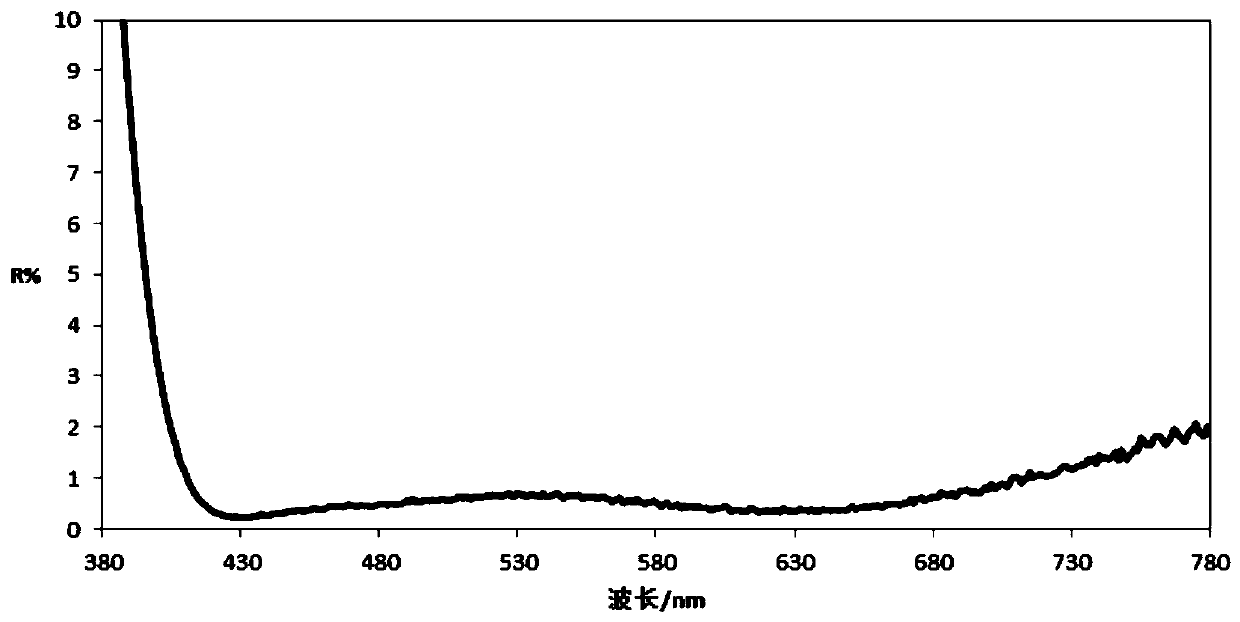Optical element, method of manufacturing optical element and optical lens
A technology for optical components and optical lenses, which is used in the field of manufacturing optical components, optical lenses, and optical components, and can solve the problems of excessive stray light in optical lenses.
- Summary
- Abstract
- Description
- Claims
- Application Information
AI Technical Summary
Problems solved by technology
Method used
Image
Examples
Embodiment 1
[0041] In this embodiment, when the second film system includes multiple high-refractive-index film layers and multiple low-refractive-index film layers, the high-refractive-index film layers and low-refractive-index film layers are stacked alternately, and the light-absorbing film 20 has a wavelength of 430nm The average reflectance of light in the range of 780nm is R%, R%≦1%; and / or the average absorptivity of the light absorbing film 20 to light in the range of 430nm to 780nm is Abs%, Abs%≧97%. The second film system is alternately stacked high-refractive-index film layers and low-refractive-index film layers, which can effectively increase the light absorption rate, reduce the light reflectance of the main body 10, reduce the generation of stray light, and further improve the imaging quality. By setting a high refractive index film layer and a low refractive index film layer, the average reflectance of the optical element to light can be reduced to less than 1%, and the ave...
Embodiment 2
[0058] The difference from Embodiment 1 is that the structure of the second film system is different.
[0059] In this embodiment, when the second film system has only one film layer, the average reflectance of the light-absorbing film 20 to light with a wavelength in the range of 430nm to 780nm is R%, and R%≦3%; and / or the light-absorbing film 20 The average absorption rate Abs% for light with a wavelength in the range of 430nm to 780nm, Abs%≧97%. When the second film system is only one film layer, it is convenient to manufacture the second film system, and at the same time, it can effectively increase the light absorption rate, reduce the light reflectance of the body 10, reduce the generation of stray light, and improve the imaging quality.
[0060] In this embodiment, the body 10 is glass, the light-absorbing film 20 includes a first film system and a second film system, the second film system is only a metal film layer, and the structure of the film layer of the light-abs...
Embodiment 3
[0062] The difference from Embodiment 1 is that the light absorbing film only has the first film system.
[0063] In this embodiment, the body 10 is glass, and the light-absorbing film 20 only includes the first film system, that is, only includes the metal film layer and the low-refractive index film layer, and its film layer structure is: (Cr / SiO 2 )^4, wherein, the extinction coefficient k of Cr is 2.39, SiO 2 The refractive index of 1.47. Starting from one side of the body 10, the first layer is Cr, and the second layer is SiO 2 , the third layer is Cr, and the fourth layer is SiO 2 .... In this embodiment, the thickness of each film layer in this embodiment is set to be 59.99 nm, 35 nm, 18.31 nm, 33.23 nm, 4.31 nm, 46.55 nm, 9.3 nm, and 5 nm from the side adjacent to the body 10 . In this example SiO 2 As a low refractive index film layer. It should be noted that 4 refers to (Cr / SiO 2 ) repeated four times.
PUM
| Property | Measurement | Unit |
|---|---|---|
| Average reflectance | aaaaa | aaaaa |
Abstract
Description
Claims
Application Information
 Login to View More
Login to View More - R&D
- Intellectual Property
- Life Sciences
- Materials
- Tech Scout
- Unparalleled Data Quality
- Higher Quality Content
- 60% Fewer Hallucinations
Browse by: Latest US Patents, China's latest patents, Technical Efficacy Thesaurus, Application Domain, Technology Topic, Popular Technical Reports.
© 2025 PatSnap. All rights reserved.Legal|Privacy policy|Modern Slavery Act Transparency Statement|Sitemap|About US| Contact US: help@patsnap.com



